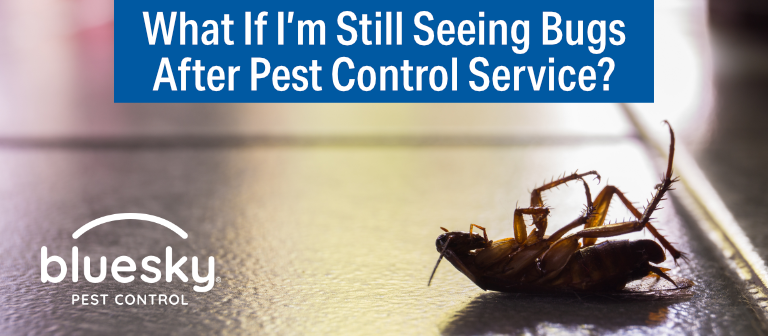Some Known Facts About Eco Bed Bug Exterminators Dc.
Some Known Facts About Eco Bed Bug Exterminators Dc.
Blog Article
A Biased View of Eco Bed Bug Exterminators Dc
Table of ContentsUnknown Facts About Eco Bed Bug Exterminators DcEco Bed Bug Exterminators Dc Fundamentals ExplainedSome Known Incorrect Statements About Eco Bed Bug Exterminators Dc Indicators on Eco Bed Bug Exterminators Dc You Should KnowAn Unbiased View of Eco Bed Bug Exterminators Dc
Because pesticides are toxic, they are also potentially dangerous to people, animals, other microorganisms, and the environment. Individuals who utilize chemicals or on a regular basis come in call with them should recognize the family member poisoning, possible wellness results, and preventative procedures to minimize direct exposure to the items they utilize. Hazard, or risk, of utilizing chemicals is the potential for injury, or the degree of threat included in using a chemical under a provided set of conditions.
Applicators can reduce or almost eliminate direct exposure-- and therefore lower threat-- by following the tag directions, utilizing personal protective garments and tools (PPE), and taking care of the pesticide properly. Even more than 95 percent of all pesticide exposures come from dermal exposure, mainly to the hands and forearms. By using a pair of unlined, chemical-resistant handwear covers, this type of exposure can be almost eliminated.
The hazardous results that happen from a single direct exposure by any course of entrance are termed "acute results." The four routes of direct exposure are facial (skin), breathing (lungs), oral (mouth), and the eyes. Severe poisoning is figured out by taking a look at the dermal poisoning, inhalation toxicity, and oral poisoning of examination animals.
Examine This Report on Eco Bed Bug Exterminators Dc
Severe poisoning is determined as the quantity or focus of a toxicant-- the a.i.-- needed to eliminate half of the animals in an examination populace. This measure is usually expressed as the LD50 (deadly dosage 50) or the LC50 (lethal concentration 50). In addition, the LD50 and LC50 values are based on a solitary dose and are tape-recorded in milligrams of chemical per kilo of body weight (mg/kg) of the test pet or in parts per million (ppm).
The reduced the LD50 or LC50 value of a pesticide item, the higher its poisoning to humans and animals. Pesticides with a high LD50 are the least harmful to people if utilized according to the instructions on the item label. The chronic poisoning of a pesticide is determined by subjecting guinea pig to long-term exposure to the energetic ingredient.
The persistent poisoning of a chemical is a lot more hard than severe poisoning to identify via laboratory analysis. Products are categorized on the basis of their loved one severe toxicity (their LD50 or LC50 worths). Chemicals that are classified as extremely poisonous (Poisoning Group I) on the basis of either dental, facial, or inhalation poisoning must have the signal words risk and POISON printed in red with a skull and crossbones sign plainly showed on the front panel of the bundle label.
The intense (solitary dose) dental LD50 for pesticide items in this team varies from a trace total up to 50 mg/kg. As an example, exposure of a couple of drops of a product taken by mouth can be deadly to a 150-pound individual. Some pesticide products have simply the signal word risk, which informs you nothing concerning the intense toxicity, just that the item can cause serious eye damages or severe skin irritation
The Buzz on Eco Bed Bug Exterminators Dc
In this category, the severe dental LD50 varieties from 50 to 500 mg/kg. A tsp to an ounce of this material can be deadly to a 150-pound individual (exterminator near me). Chemical items identified as either a little toxic or fairly nontoxic (Poisoning Classifications III and IV) are called for to have the signal word CAUTION on the pesticide label

All pesticide toxicity chemicalPoisoning worths the Consisting of, can be found on located product's Material Safety Product Security InformationMSDS). Pesticide tags and MSDS can be acquired from stores or makes - http://go.bubbl.us/e081a5/a3b1?/Established-in-2007,-Eco. The signs of chemical poisoning can range from a moderate skin irritability to coma or even fatality.
Individuals additionally differ in their level of sensitivity to different degrees of these chemicals. see post Some individuals might show no reaction to a direct exposure that may trigger severe disease in others (bed bug spray). As a result of prospective health and wellness worries, pesticide individuals and trainers have to recognize the usual indicators and signs and symptoms of chemical poisoning. The results, or symptoms, of pesticide poisoning can be extensively defined as either topical or systemic.
Get This Report about Eco Bed Bug Exterminators Dc
Dermatitis, or swelling of the skin, is approved as the most generally reported topical effect related to chemical direct exposure. Symptoms of dermatitis range from reddening of the skin to breakouts and/or sores. Some individuals have a tendency to cough, hiss, or sneeze when revealed to chemical sprays. Some people respond to the strong smell and annoying effects of petroleum extracts used as carriers in pesticide products.
This sign typically subsides within a few minutes after an individual is eliminated from the exposure to the toxic irritant. A response to a chemical product that triggers someone not just to sneeze and cough but also to develop serious acute respiratory system signs is more likely to be a real hypersensitivity or allergic response.
Systemic effects are fairly various from topical effects. They usually happen away from the initial point of get in touch with as an outcome of the chemical being soaked up right into and dispersed throughout the body.
Report this page